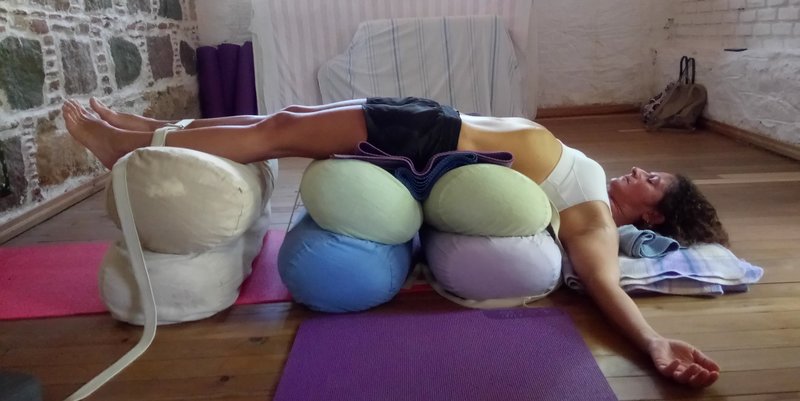The most profound and efficient work in restorative yoga is the regulation of the somatic nervous system. The sympathetic (fight and flight modus) and the parasympathetic nervous system (relaxation) can be stimulated depending on which part of the body is stretched, supported or released. This way, the memories of stress held in the tissue, viscera and muscles can be addressed and dealt with.
In modern trauma therapy this method is called ‘pendulation’, an oscillating between sympathetic and parasympathetic nervous system. This results in a healing process and is experienced physically as well as psychologically. Stress and tension are resolved and a feeling of inner balance and being in tune (harmony) with oneself takes place.
